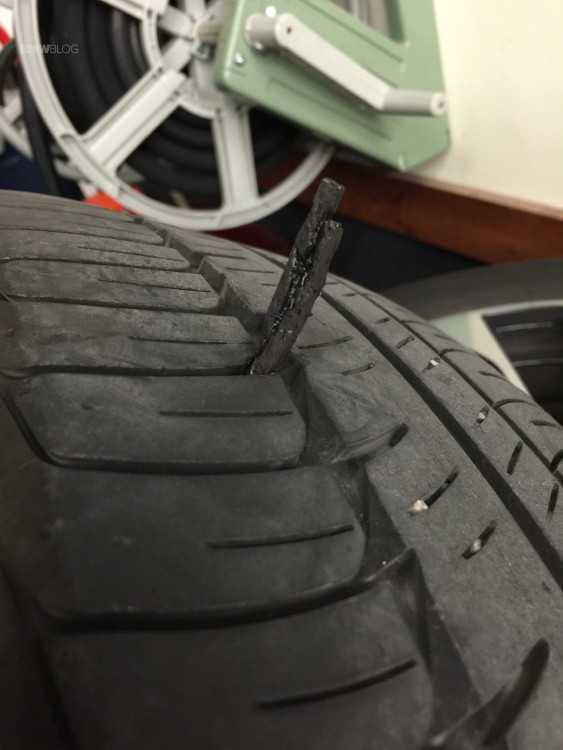Run-flat tire repair procedures recommended by the U.S. Tire Manufacturers Association (USTMA) are the same for both run-flat and non-run-flat tires.
Photo courtesy of Goodyear Tire and Rubber Co.
What should a fleet professional know when utilizing assets with run-flat tire versus a non-run-flat tire? According to mounting and balancing equipment manufacturers and tire manufacturers the consensus is a run-flat’s unique construction makes them more difficult to mount and demount.
However, there is no consensus on whether or not run-flat tires can be repaired. Tire manufacturers often defer to the vehicle manufacturer’s replacement tire restrictions and recommendations.
Michelin North America Inc., for example, allows its run-flat tires (Zero Pressure) to be repaired under certain guidelines. However, repairing the original equipment run-flat tires on a BMW isn’t an option, per its owner’s manual.
Run-flat tire repair procedures recommended by the U.S. Tire Manufacturers Association (USTMA) are the same for both run-flat and non-run-flat tires. USTMA does preface that by advising vehicle owners to consult the tire manufacturer for its repair policy and, if applicable, recommended repair procedures.
When asked if there are any instances where a run-flat tire can be repaired, a Pirelli Tire LLC spokesperson said no, a run-flat should never be repaired.
According to Pirelli’s Run-Flat Hazzard Policy, “damaged run-flat tires or run-flat tires that have experienced a loss of pressure should immediately be replaced with another run flat tire of identical size and service description (load index and speed symbol).”
A technical services bulletin from Yokohama Tire Corp. makes it clear Yokohama ZPS run-flat tires are not to be repaired following a puncture “or other tire disablement.”
“ZPS run-flat tires are covered by the Yokohama standard limited warranty that provides for tire replacement under specified conditions,” the bulletin reads.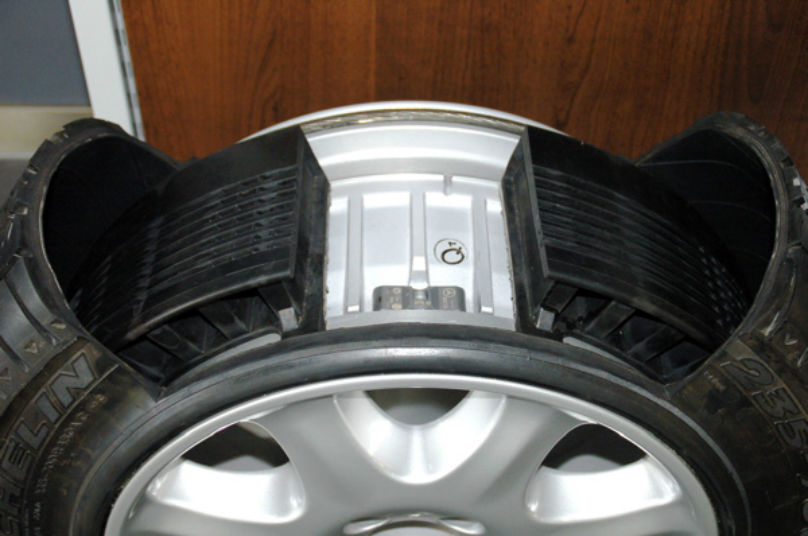 “Your ZPS tire will be replaced on a prorated basis based on remaining tread depth when the tire has been damaged due to a tread area puncture within the repairable area and limits defined by (USTMA).”
“Your ZPS tire will be replaced on a prorated basis based on remaining tread depth when the tire has been damaged due to a tread area puncture within the repairable area and limits defined by (USTMA).”
Continental Tire the Americas LLC does not recommend any repair to Continental SSR (Self Supporting Runflat) tires. The company’s explanation is as follows: “Even a trained tire specialist may be unable to recognize internal structural damage to a Self Supporting Runflat (SSR) tire resulting from having been driven in an under inflated or zero pressure condition. Such damage may not be visible on the surface of the inner liner or sidewall, making it impossible to determine the tire suitability for repair. Continental does not recommend any repair to Continental SSR tires. Note: Continental advises if a tire is returned under complaint and reason for the product’s disablement is in any way associated with a repair or the reason for repair, the manufacturer’s warranty is invalidated. ”
”
“Repairs of run-flats are a major concern,” says Chris Davis, Continental’s technical product service manager. “Always refer to the tire manufacturer’s recommendations on repairs as it can vary by manufacturer. Some allow a repair, some don’t and some allow multiple repairs, noting that each repair lowers the speed rating of the tire. Consider your dealership’s liability as the ‘tire expert’ agreeing the tire is not damaged, should you repair the tire without knowing damage between the layers.
“Run-flat tires, by design, have a very thick, stiff compound in the sidewall,” he said. It is typically not the same material that you can visualize on the inside or outside of the tire. If there is a separation between those layers, the dealer and the customer may not know about the condition until the tire has a second incident of low pressure causing the run flat tire not to work as designed, leaving the customer stranded on the highway or worse, having a rapid air loss and instability of control.
“Use your best judgment based on the tire manufacturer’s suggestions (and) customer safety, and if in doubt, contact the tire manufacturer’s customer service for recommendations,” he added.
Bridgestone Americas Inc. has a different view.
“Under certain circumstances, run-flat tires can be repairable,” said Robert Saul, director of consumer product strategy for Bridgestone Americas Tire Operations LLC.
There is no consensus whether run-flat tires can be repaired. Tire manufacturers often defer to the OEM's replacement tire recommendations.
“Guidelines vary by vehicle manufacturer, so it’s important for dealers to always abide by the vehicle manufacturer’s recommendations. Many tire manufacturers also will publish their repair and service guidelines in the form of technical bulletins, so dealers can check to see if the manufacturer of the tire they are servicing has a technical bulletin that they can refer to as well.
“In certain instances, a run-flat tire can be repaired, provided it meets specific guidelines,” said Saul. “These guidelines are contingent upon how far the run-flat tire was driven at low inflation conditions, the amount of air loss experienced and the overall condition of the tire. A run-flat tire that has experienced a puncture or loss of pressure must be thoroughly inspected for any resulting damage to determine if it can be put back in service.”
“These guidelines are contingent upon how far the run-flat tire was driven at low inflation conditions, the amount of air loss experienced and the overall condition of the tire. A run-flat tire that has experienced a puncture or loss of pressure must be thoroughly inspected for any resulting damage to determine if it can be put back in service.”
Juan Britos, senior technical services specialist for Hankook Tire America Corp., says Hankook’s run-flat models “can be repaired in the same manner as our standard versions. We design our tires to be repaired as simply as possible."
Pete Liebetreu, vice president of marketing for Hunter Engineering Co., said run-flat tires from European and Asian OEM manufacturers are very often mounted to a special wheel with an Eh3 (for “extended hump”) bead seat. Nokian “Flat Run” tires are one of many examples.
“We see these wheels every day in the U.S. on BMW, Lexus, Mercedes, Infinity, Toyota, Audi and other vehicles,” he said.
“The Eh3 wheel actually creates much of the difficulty in servicing these wheels, more than tire stiffness does. Eh3 means the wheel has an extended safety hump, which helps the deflated run-flat stay on the wheel properly in the event of a puncture,” he added.
“For the tire changer though, that extended hump makes it even harder to service. That’s because the already stiff tire needs to be pushed even further down to be in the drop center for demounting or mounting. Many technicians miss this and end up struggling with the tire that they could easily service if they pressed a little more on the key points with one of the press arms I mentioned earlier.”
A spokesperson from Bridgestone Americas Inc. said Eh3 (and Eh3+) wheels provide bead retention characteristics desired by car companies; in many cases they help extend run-flat operating distances, particularly at reduced loads.
“While Eh3/Eh3+ wheels are considered components of an extended mobility system, they are not explicitly restricted from use without other system components. In other words, Eh3/Eh3+ wheels may be able to be used with conventional tires or with conventional valves (without TPMS sensors).”
In other words, Eh3/Eh3+ wheels may be able to be used with conventional tires or with conventional valves (without TPMS sensors).”
According to Bridgestone’s warranty manual, Bridgestone and Firestone RFT tires should never be replaced or mixed with conventional tires unless on an emergency or temporary basis.
This feature orginially appeared in Modern Tire Dealer, a Bobit publication.
Goodyear Run On Flat Tyres are specifically designed to minimise the inconvenience and danger caused by damage or punctures due to their reinforced structure. Should a puncture occur, the driver can safely continue their journey at a reduced speed until there is a safe place to fix the tyre. Find out more about how our Run On Flat tyres work here.
The reinforced sidewall structure of Goodyear Run On Flat tyres allows the tyre to continue to support the weight of the vehicle in the event of a puncture or damage. The strengthened tyre shoulders help to ensure vehicle stability during air less, prevent swerving or lack of steering and reduce the eventually of having to change the tyre on the roadside. Fitted only to vehicles with a Tyre Pressure Monitoring System, the driver is alerted to pressure loss and becomes aware of the need to minimise the journey length to find a safe location for tyre repair.
Learn more about the structure of Run on Flat tyres.
Run On Flat tyres do not reduce the likelihood of a puncture or damage however, the reinforced structure of the tyre provides additional safety and convenience features that traditionally designed tyres do not.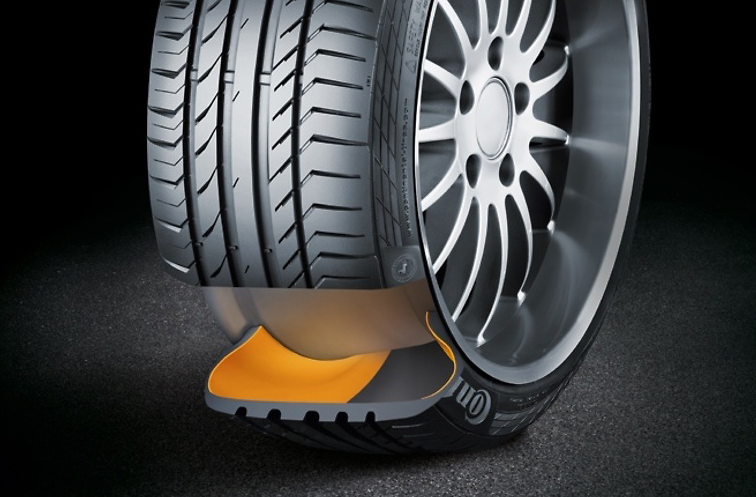 The tyre is designed to be able to provide the vehicle with stability to travel at a reduced speed to a safe place or garage to be fixed. The benefit of this means the driver does not have the difficulty or danger of changing a tyre at the side of the road, whilst removing the need to call for emergency roadside assistance.
The tyre is designed to be able to provide the vehicle with stability to travel at a reduced speed to a safe place or garage to be fixed. The benefit of this means the driver does not have the difficulty or danger of changing a tyre at the side of the road, whilst removing the need to call for emergency roadside assistance.
Although not all manufacturer Run Flat tyres can be repaired, Goodyear Run On Flat Tyres can be repaired by a qualified tyre professional following a thorough inspection and analysis of the tyre history. In case of any doubt, it is recommended that the tyre should not be fixed. Tyres may only have one repair in their lifetime, all repair work is the responsibility of the tyre professional.
Goodyear does not support tyre repairs under the following conditions: |
Repairs outside of the tread area (the shoulders) |
If the sidewall area is damaged inside or outside of the tyre by a sharp object which could reduce support insert – substantially reducing the distance and lifespan of the tyre |
Tyres that have been driven at a low or zero pressure for a substantial distance |
Inner liner damage or rough appearance |
Any damage that would make a standard tyre unrepairable |
Despite their reinforced design, Run On Flat tyres contain the same compounds as conventional tyres and can be cared for in a similar way detailed on the Maintaining Your Tyres page.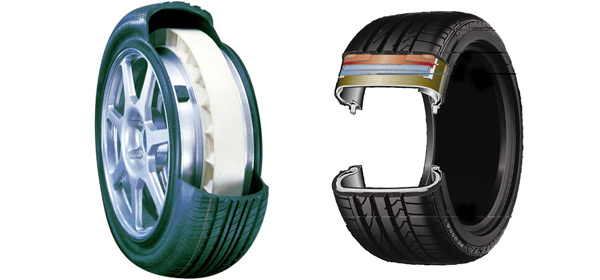 It is recommended to carry out regular visual checks for damage alongside monitoring pressure and tread depth to extend tyre longevity.
It is recommended to carry out regular visual checks for damage alongside monitoring pressure and tread depth to extend tyre longevity.
In the case of Run On Flat tyres, it is strongly recommended not to buy part worn tyres. When purchasing a part worn tyre, the history of tyre such as defects, damage and repairs are unknown. This can prove to be dangerous in the case of a Run On Flat tyre due to the difficulty of understanding how it will react in the case of a puncture or damage, compromising on safety and performance.
Slime Pro-Series Flat Tire Repair Kit Operating Instructions
CAUTION! Carefully read all the instructions
Non -compliance with warning instructions can lead to fire, personal injuries or damage to the property
Attention: Hot • Do not hold in your hands during work • Place the inflator on a hard clean surface.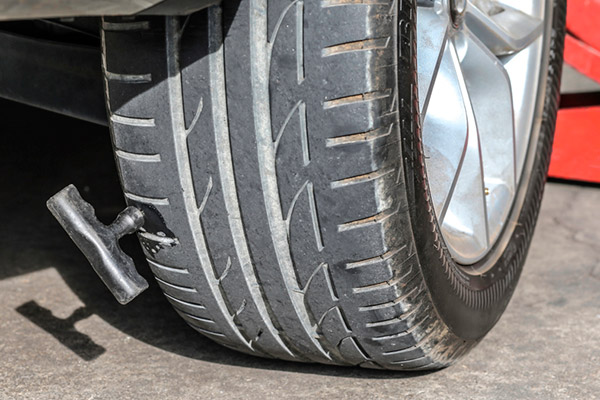
Check the tire warranty before installing this product.
NOTE: Seals up to 1/4 in. (6 mm) punctures in the tread area for flat tire repairs. The correct tire pressure can be found in your vehicle owner's manual or on the driver's side door jamb.
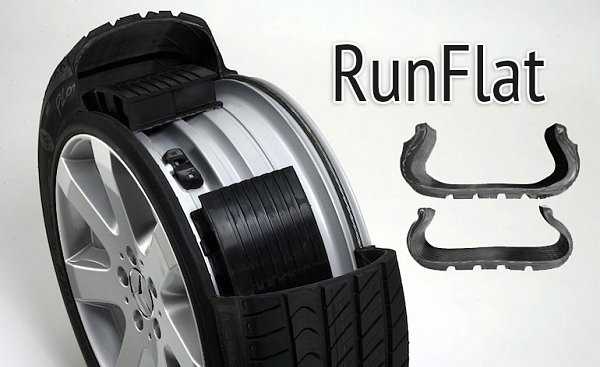 Press the power button to start inflation. When the pressure gauge reaches the set value, the inflator automatically stops inflation. Once the desired tire pressure has been reached, disconnect the air hose and unplug the power cord. The ON/OFF button can be used to override the preset pressure value if needed.
Press the power button to start inflation. When the pressure gauge reaches the set value, the inflator automatically stops inflation. Once the desired tire pressure has been reached, disconnect the air hose and unplug the power cord. The ON/OFF button can be used to override the preset pressure value if needed. Drive two miles at less than 25 mph to distribute the sealant throughout the tire, allowing the puncture to be found and sealed. Check the tire pressure again to make sure the puncture is sealed.
Slime® provides fast emergency repairs. Treated tires should be repaired by a qualified tire technician at the earliest opportunity to ensure safety and proper cleaning of the tire pressure sensor, if any. We recommend repairing a treated tire within 3 days or 100 miles after using Slime Tire Sealant, whichever comes first. Inform the tire changers about the use of the product.
AIR ONLY mode can also be used for bicycles, sports balls, rafts and other inflatable boats.

IMPORTANT! When using the supplied inflatable adapters, the valve depressor adapter (fig. X) must be used with the inflatable adapters. Failure to use the supplied valve depressor adapter with inflatable adapters will result in excessive pressure and failure of the flat tire repair kit. To install, remove the valve depressor adapter assembly from the back of the flat tire repair kit. Unscrew the Presta valve adapter and set aside. Screw the valve depressor adapter into the air hose of the flat tire repair kit (fig. Y) as far as it will go. Push the desired inflatable adapter all the way in and inflate the object.
PRESSURE RELIEF provides optimum psi pressure. Press on the area to deflate the tire if it was over-inflated or there was too much air before inflating. Check your pressure gauge for the desired PSI level. NOTE. The correct tire pressure can be found in your vehicle owner's manual or on the driver's side door jamb.
The inflator does not work when connected to the mains:
Inflator works but does not inflate:
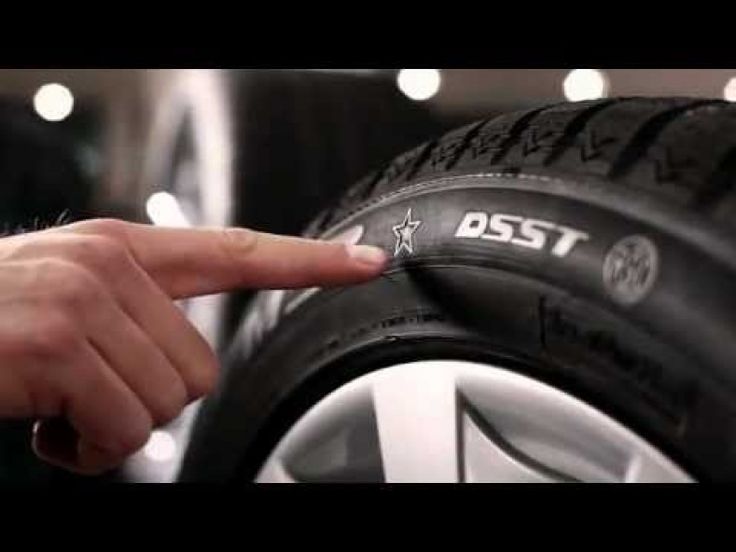
Inflator running slowly:
NOTE: If the tire is completely flat, it is possible that the tire may separate from the rim, causing air to leak when you try to inflate it. In the event of such a situation, you will have to raise the tire before inflating. Dispose of this product at an e-waste point or facility. Do not dispose of in the trash or standard recycling container.
WARNING: IS HARMFUL OR DEATH IF SWALLOWED. IRRITANT TO SKIN AND EYES. Avoid swallowing and inhalation. Avoid contact with eyes and skin. Wash your hands after use. Use only as directed. KEEP OUT OF THE REACH OF CHILDREN.
FIRST AID : In case of contact with eyes, flush eyes with cool water for 15 minutes, occasionally lifting eyelids.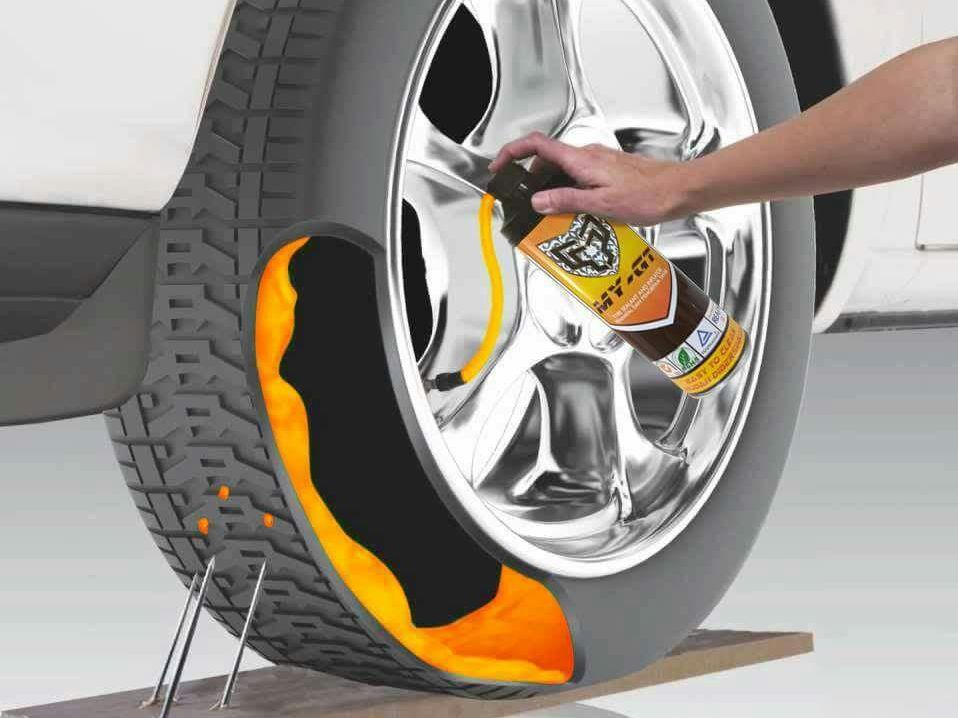 In case of contact with skin, wash off with soap and water. When inhaling, look for fresh air. If swallowed, DO NOT VOMIT; drink plenty of water and see a doctor or hospital. Contains ethylene glycol and natural latex rubber.
In case of contact with skin, wash off with soap and water. When inhaling, look for fresh air. If swallowed, DO NOT VOMIT; drink plenty of water and see a doctor or hospital. Contains ethylene glycol and natural latex rubber.
Call HimTel : +1-800-255-3924 or 1-813-248-0573
Reference product name : Article No. 50150 or No. 10179 V1D (reserve)
Exchange cartridges with sealant • Article No. 10179
Warranty Information: www.slime.com/ Garantiy 9000 9000 9000 COMMENTS
QUESTIONS OR COMMENTS : Call 1-888-457-5463 or visit www.slime.com
ITW Global Tire Repair • 125 Venture Drive, Suite 210, San Luis Obispo, CA 93401 US
Slime® is a trademark of Illinois Tool Works, Inc., registered in the US and other countries.
The flat tire checker not only saves your life, it saves your wallet.
Therefore, at the first suspicion of a flat or damaged tire, immediately contact a service station. After checking, the specialist will advise you on what to do in your case - to repair or replace a flat tire.
If you are not sure that you can fix the problem of flat tires yourself, then it is better to seek help from specialists. They will look into your problem and advise you on whether to fix the damaged tire or replace it.
Also, truck tire shops can offer you useful services for longer tire life:
Initially inspect the tire for any stuck foreign objects. If they are not available, we advise you to do the following manipulations:
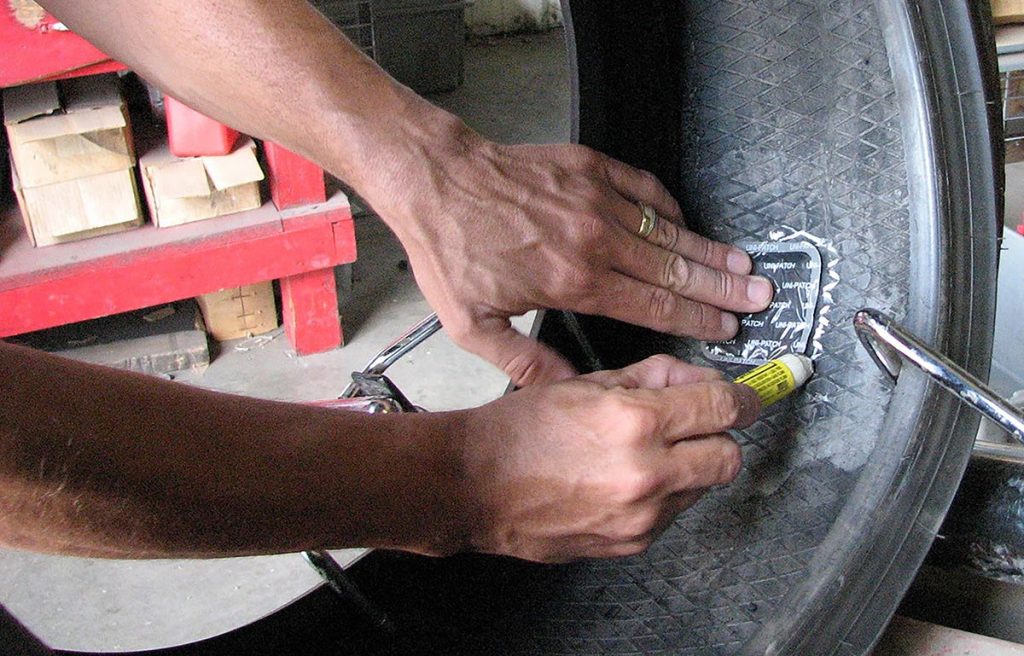
Here are some general guidelines for changing tires yourself. Be aware that changing a tire can result in personal injury and/or damage to the vehicle/tools. If you are not sure that you can change the tire yourself, contact your nearest workshop for help.
 If you do not know how to do it correctly, the instructions will help.
If you do not know how to do it correctly, the instructions will help. Related videos:
See also:
Continental UltraContact - the new.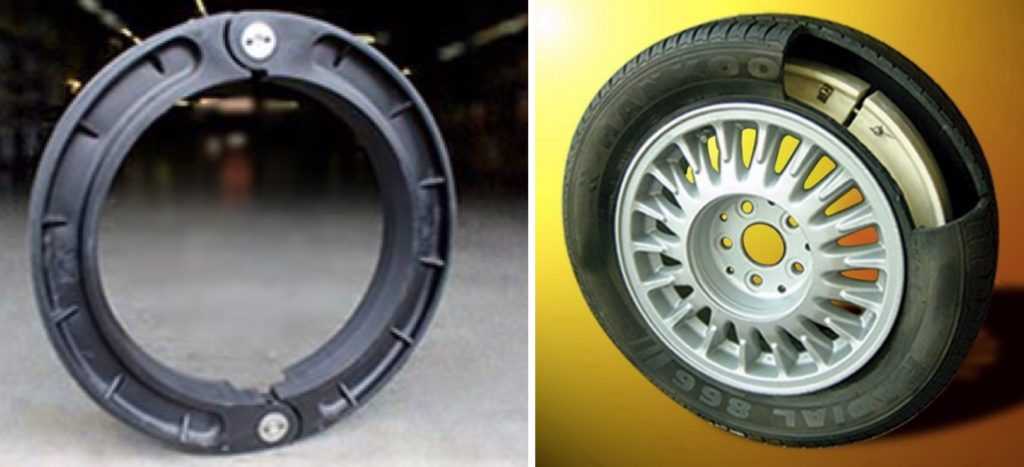 ..
..
Continental keeps pace with the times, responding mobile to a rapidly changing society. Each product of the company is a challenge to the highest quality of the most...
More
Selection of tires for trucks...
When choosing tires for a working vehicle, one should not forget about the operating conditions. Evaluating them, the owner will be able to make the right decision. With ...
More
Narrow or wide? Which is better...
The opinions of car owners are divided in two. Some believe that it is better to install wide tires in winter, others express the opinion that it is necessary to purchase and install ...
More
Tires for all occasions
The main source of headache for car owners is the choice of tires for the vehicle. And if the situation is simpler with cars, then to choose ...
Read more
Budget Truck Tires
The modern world is characterized by a rich variety of vehicles.